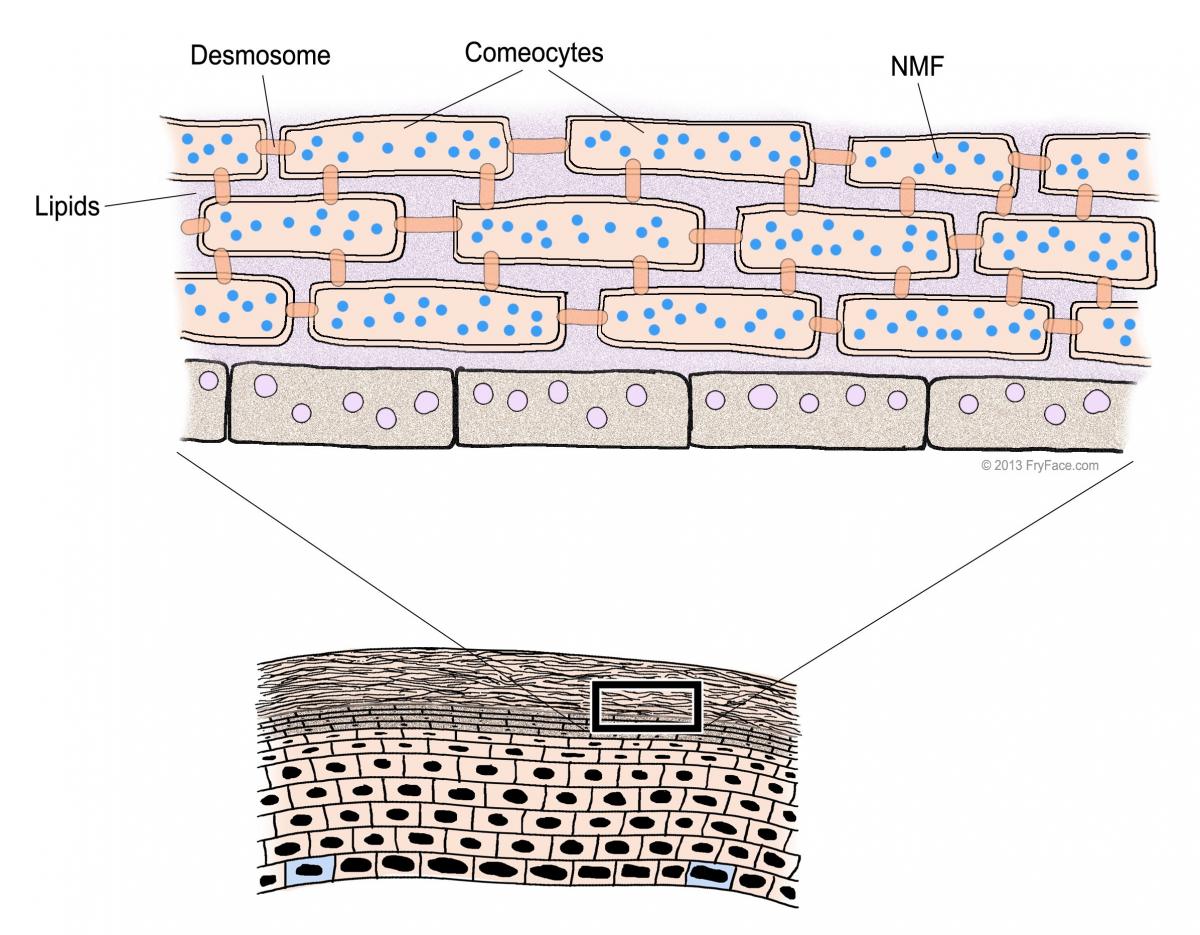The outermost layer of skin, the stratum corneum, is responsible for maintaining the appropriate water content of the skin. This paper-thin superficial layer of skin, comprised of approximately 20 cell layers, is an effective water barrier due to three primary characteristics:
- Individual skin cells in the stratum corneum (corneocytes) are surrounded by waterproofing lipids (produced in the stratum granulosum layer) that prevent the evaporation of water from the skin. The most common lipids found in the stratum corneum are ceramides, free fatty acids, and cholesterol.
- Collections of water-soluble compounds within corneocytes, collectively called the Natural Moisturizing Factor (NMF), absorb water from the environment and from the lower layers of skin to maintain hydration. NMF is comprised of amino acids such as pyrrolidone carboxylic acid (PCA), urocanic acid, lactic acid and urea.
- Protein bridges (called desmosomes) hold the corneocytes together, making it difficult for water to evaporate out of the skin.
When these mechanisms do not function properly and adequate water content is not maintained ‘dry skin’ ensues. Individual cells cannot shed appropriately and dry flaky skin results.

